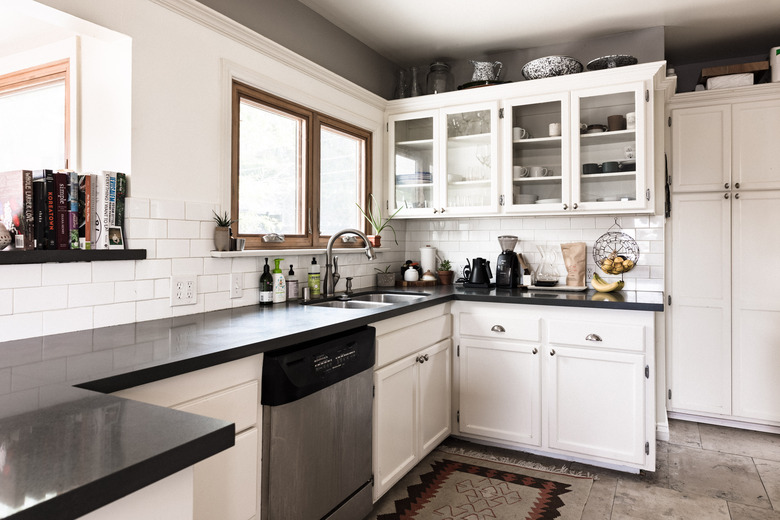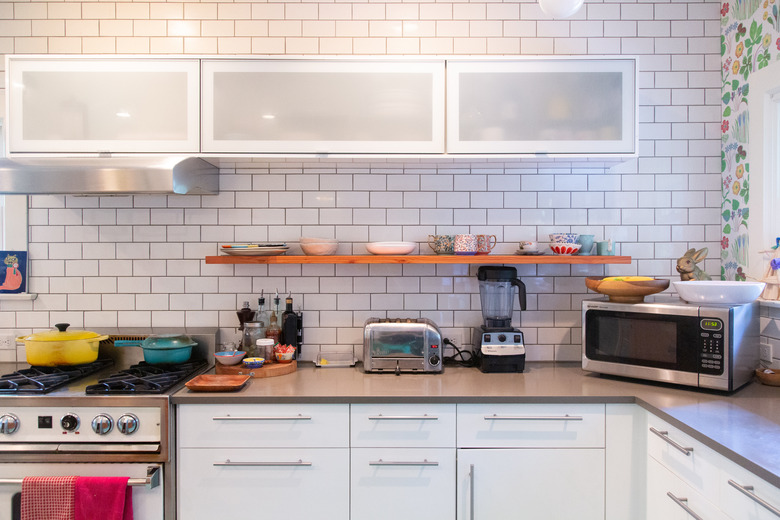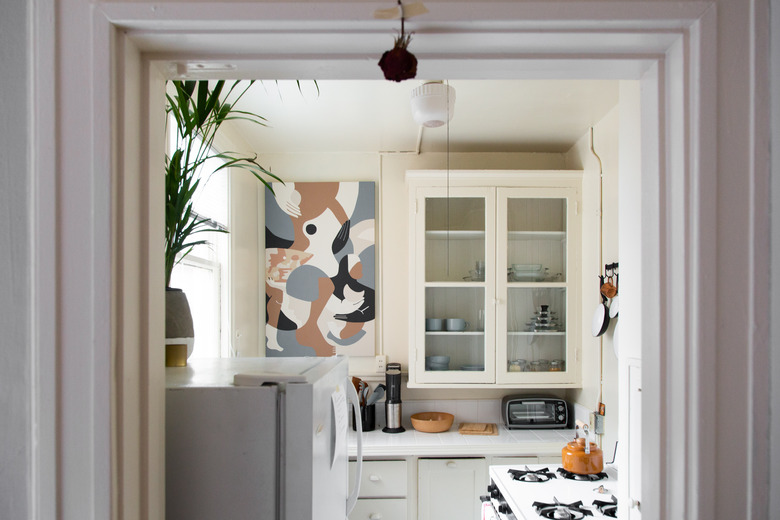Kitchen Cabinet Interior Lighting Guide
Kitchen cabinet interior lighting adds a touch of luxury to your kitchen. For glass-front or doorless cabinets, interior lighting highlights items on the cabinet shelves while providing a bit of ambient mood lighting for the kitchen. Motion-sensing lights are ultra handy within cabinets with opaque doors and can even be used within deep base cabinets, helping you find that pot lid that worked its way to the back of the cabinet.
You're not limited to boxy fixtures or bulky pucks for interior cabinet lights either. Technology has improved so much in recent years that thin, unobtrusive strips can be installed without any electrical experience.
Benefits of Cabinet Interior Lighting
Benefits of Cabinet Interior Lighting
Unlike under-cabinet lighting and overhead lights, kitchen cabinet interior lighting isn't meant to serve as a primary light source for typical kitchen activities, such as meal preparation or even dining. In many cases, especially with glass-paneled cabinet doors, lights installed inside a kitchen cabinet are there more for looks than for functionality, illuminating the cabinet's contents a bit when the main kitchen lights are off. This type of lighting is a lot like cove lighting in that it adds a hint of an upscale or luxury vibe to the room without adding much light to the room as a whole.
A completely different type of cabinet interior light illuminates the contents of the cabinet when you open the door, much like some stick-on, battery-powered lights used in closets that do not have their own hard-wired light source. A compact motion-sensing light is a great option for deep cabinets or pantries in areas that aren't reached well by the overhead kitchen lighting. Some of these are quite bright and should be positioned for maximum effect without actually being in the way as you open and close drawers and doors or shift the cabinet's contents.
Skipping the Hard-Wired Lights
Skipping the Hard-Wired Lights
Kitchen cabinet interior lighting doesn't have to be wired into the walls unless you prefer dimming or turning the cabinet lights on and off with a wall switch. Adding hard-wired cabinet lights typically requires an electrician, which could add hundreds of extra dollars to your project cost compared to DIY options that plug in, use batteries or use a rechargeable power system.
Unless you're already hiring an electrician to run wiring in the kitchen, such as with a complete kitchen rebuild or new construction, it may not be worth the time or expense to drill holes in walls and cabinets to install hard-wired cabinet lights. Hard-wiring could also be tricky in a kitchen that already has cabinets and appliances in place, as it may be difficult to access the nearest electrical wires to tap into within the walls.
Strip or Bar Lights
Strip or Bar Lights
As the name implies, this type of light is shaped like a rectangular bar and may look like a miniature version of a fluorescent light fixture. While fluorescent strip lights are still available, as are those that require halogen or xenon bulbs, many manufacturers are using LEDs in the plug-in or battery-powered strip lights since these last a long time and are much smaller. The end result is a bar or strip light that is much thinner and lighter than those using bulb lights.
While these are often used as under-cabinet lights, the rechargeable and battery-operated versions excel as in-cabinet lighting because you won't need to drill holes through the cabinet for a power cord. Some versions are quite thin at only 1/2 inch, so it's fairly easy to conceal them along the front inner edge of some cabinets above the door area.
The most versatile are the USB-rechargeable magnetic light bars. These light kits come with a thin metal strip with adhesive on the back of the metal. Install the metal strip in the ideal location in the cabinet and then stick the light atop the metal, removing it whenever it needs to be recharged.
Some of these bar lights can be set as motion sensing or to turn on after dark, making them ultra versatile. As with any type of lighting, read the product information thoroughly to determine the size of the light bar and the brightness of the lights. A light that says "super bright" on the packaging is probably not ideal as an in-cabinet light, as it may be a bit too harsh or hard on the eyes.
Flexible LED Light Strips
Flexible LED Light Strips
Flexible LED light strips, sometimes called LED tape lights, offer the most versatility as cabinet interior lighting in that they can be bent to install up one cabinet wall, across the cabinet ceiling and down the other cabinet wall. These peel-and-stick strips can even be cut to approximate size or joined for longer runs provided that the cuts and connections are made at specifically marked points along the light strip, according to Inspired LED.
This type of lighting can be hard-wired or used with plug-in power supplies that are sold separately. Some versions also run off batteries and can be powered on or off with a remote. For the battery-operated type, you'll still need to find an inconspicuous corner of the cabinet to hide the box housing the batteries.
As with light bulbs, some LED strip lights are brighter than others. Strips that average 100 to 300 lumens per foot are good for mood or accent lighting within the cabinet, according to LED Supply. For an LED strip light that's bright enough to find the right spices buried deep within a pantry cabinet, opt for a light that emits 300 to 450 lumens per foot.
Consider the Power Source
Consider the Power Source
Before purchasing cabinet lights, read the product information to determine what type of power the lights require. For instance, aside from lights designed for hard-wiring into your home, some run off batteries, some recharge via USB and others plug into an outlet and may have a power supply similar in appearance to the type used by the average laptop computer. For lights that plug in, you can drill a hole near a corner of the cabinet to run the cord to an outlet that sits above or below the cabinet if the cord will reach.
Power supplies may be larger or chunkier than the actual lights they power, so make sure you have a means to hide the actual power supply. Atop the cabinet this is easy since it sits out of view, but beneath a cabinet means you may have to attach the supply inside the bottom frame of the wall cabinet with mounting clips. If possible, inspect the power supply/cord setup before purchase to ensure it suits your needs, as a bulky power supply dangling beneath a wall cabinet detracts from the appearance of that part of the kitchen.
Battery-powered lights, such as the stick-on pucks and rectangles sold in discount stores, are a good option in areas you won't need to illuminate frequently, such as a deep cabinet containing roasting pans used on special occasions. This type of light may be either motion sensing or the type that powers on by pushing a button. If you are using battery-powered lights as mood lighting within a glass-door cabinet, your best bet may be a light that uses rechargeable batteries, especially if you plan to turn on the cabinet lights every night.


